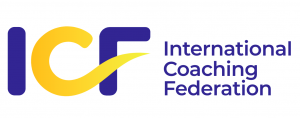Antifragility serves you a favour

Each of us responds to adversity differently. There are those who react quickly, those who resist, those who adapt, those who protect themselves. To be stronger, ready to change and improve, it is essential to become anti-fragile. To understand the concept of antifragility, it is necessary to define its direct opposite: fragility. A system is fragile when it undergoes events that can compromise or destroy it. Being anti-fragile is different from being resilient or robust. It is precisely experiencing stress and difficulty that makes us stronger. It is no longer enough to be resilient. We must embrace the unexpected, the difficulties, the changes and use them as levers to evolve. Antifragility encourages us to view stress and uncertainty as opportunities for growth and learning. Nassim Taleb, a Lebanese statistician, philosopher and economist describes, in his book The Black Swan published in 2007, a world shaped by rare, unpredictable and anomalous events. In the 2012 bestseller Antifragile, Thrive in Disorder he develops a theory on how to deal with such an uncertain world. The term antifragility refers to the way systems tend to get stronger after being exposed to unexpected stressors, shocks, failures. It is the same author who gives a definition: “…some things benefit from shocks; they thrive and grow when exposed to volatility, randomness, disorder and stressors, and they love adventure, risk and uncertainty. Yet despite the ubiquity of the phenomenon, there doesn’t exist a word that describes the exact opposite of fragile. Antifragility goes beyond resilience or robustness. The resilient resists shocks and stays the same; the antifragile gets better.” This of course also applies to humans. Taleb explains the concept better by referring to three mythical figures: Damocles is an example of fragility: the courtier Damocles coveted the king’s throne. To show him how precarious his happiness was, the ruler made him sit in his place. Above it hung a sword supported only by a thin horsehair, a symbol of the worries and dangers that loomed over him. The Phoenix is an example of resilience: the bird dies in the fire and is reborn from its ashes exactly as it was before, without improvements or evolutions. It regenerates itself. The Hydra is an example of anti-fragility: every time a hero cuts off one of the monstrous snake’s heads, two grow back in its place. Hydra grows stronger through adversity. Antifragile scheme by Tatiana Barletta Develop an antifragile mindset Acquiring a strong and antifragile mindset is not something simple or immediate. Rather it is an ongoing journey of learning, experimenting and adapting, where you need to:
- resist the impulse to suppress randomness and welcome the unexpected, discomfort, uncertainty as natural conditions of life in which it is possible to cultivate one’s growth
- increase one’s self-efficacy, to be proactive and motivated to act with a spirit of initiative
- improve the ability to generate creative responses to problems
- learn to take risks, out of the comfort zone
- don’t fear failure but use mistakes as an opportunity for self-improvement
- practice emotional awareness to always be aligned with your inner world
- intentionally introduce small doses of stress into your life to train openness and willingness to handle this type of situation.
- Develop antifragility using multiple intelligences
Developing antifragility requires the alignment and integration of our 3 brains: head, heart and belly. In the optimal condition, each neural network functions at its maximum expression, bringing a higher order efficiency in decisions, in relationships and in every aspect of life. Learning to grasp the signals of the three brains is essential. It means knowing how to listen to one’s emotions, physical sensations, increase one’s emotional intelligence and use this information to guide thoughts and actions, even more so when we are under stress. Thanks to the revolutionary mBraining method and multiple brain integration techniques, called mBIT, developed since 2012 by Marvin Oka and Grant Soosalu, who has continued to integrate it with his applied studies, we can influence emotional responses and create new habits, new behaviors, fruit of awareness and alignment of our neurovegetative system. For example, through the practice of interoception, which Flaminia Fazi deepens in the training courses certified by mBIT International, it is possible to improve the perception of one’s own internal physiological states. Interoception exercises include deep breathing, relaxation.





